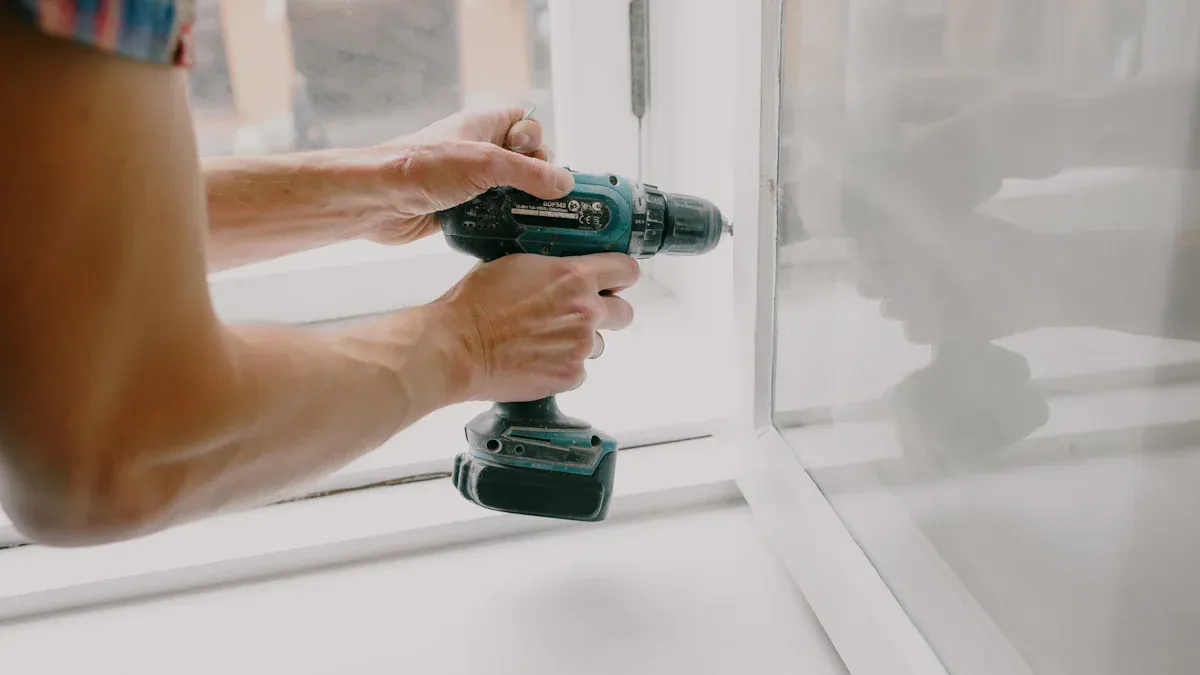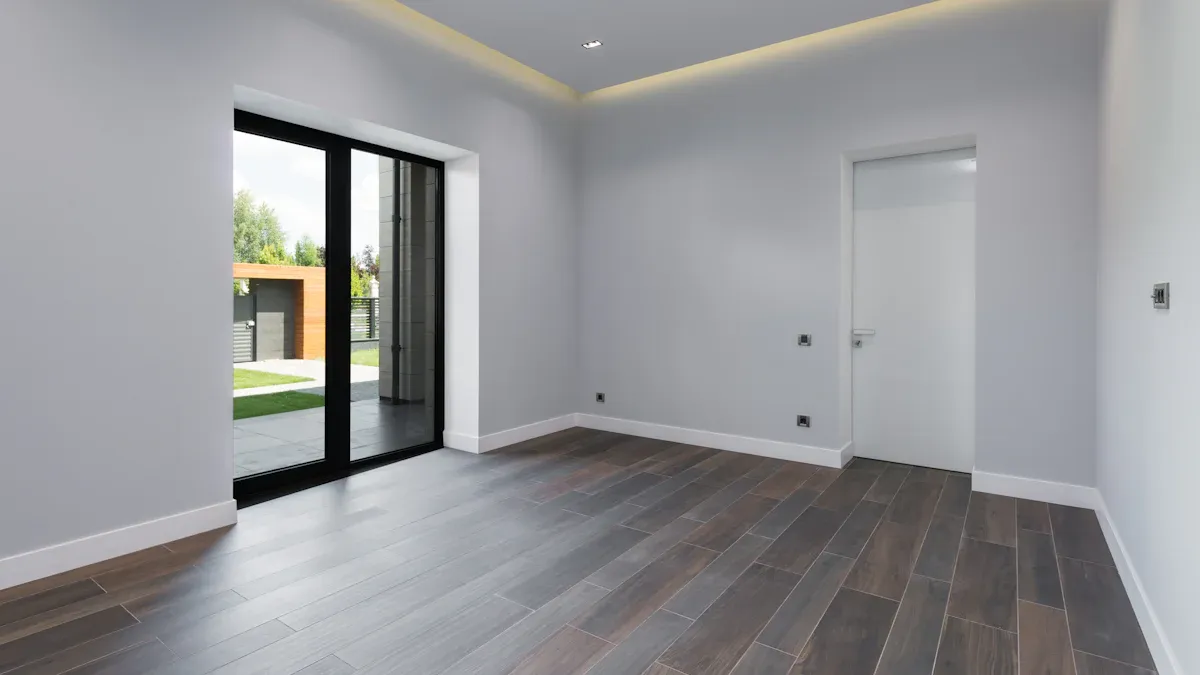
You may not notice it, but Construction And Decoration Silicone Sealant plays a big role in your home. This material bonds, seals, and protects important areas, making your living spaces safer and more comfortable. People call it the "secret glue" because it keeps things strong and lasting without being seen.
- The global market for silicone sealants reached $3.81 billion in 2021.
- Experts expect it to grow to $6.43 billion by 2031, driven by more housing and the need for high-performance products.
When you use this sealant, you help your home stand up to daily wear and weather.
Key Takeaways
- Silicone sealant creates strong, flexible, and long-lasting seals that protect your home from water, air, and weather damage.
- It works well on many surfaces like glass, metal, wood, and ceramics, making it ideal for sealing joints, windows, doors, bathrooms, and kitchens.
- Using the right type of silicone sealant and preparing surfaces properly ensures the best results and prevents leaks or cracks.
- Silicone sealants resist mold, UV rays, and temperature changes, helping your home stay clean, energy-efficient, and comfortable.
- Regular inspection and gentle cleaning keep silicone seals in good condition, extending their life up to 20 years and saving you money on repairs.
Why Construction And Decoration Silicone Sealant Is Essential
Key Properties and Performance
You rely on Construction And Decoration Silicone Sealant because it brings a unique set of properties that make your home safer and more comfortable. This sealant stands out for its ability to handle tough conditions and keep working for years. Here are some of the most important features:
- Superior UV and thermal resistance, so you can use it outdoors without worrying about sunlight or temperature changes.
- High movement capability, which means it stretches and compresses as your house shifts or settles.
- Excellent adhesion to many surfaces, including glass, metal, wood, and ceramics.
- Long service life and flexibility, so it keeps gaps sealed even as materials expand and contract.
- Chemically stable and non-reactive, which helps it resist breakdown from weather, water, and chemicals.
- Strong water repellency, making it perfect for bathrooms, kitchens, and other wet areas.
- Airtight and watertight seals that prevent drafts and leaks, improving your home's energy efficiency.
- Safe for use near electrical components and available in types designed for high temperatures or extra flexibility.
Tip: Always prepare surfaces properly and choose the right type of sealant for your project. This ensures the best performance and longest-lasting results.
You can see how the mechanical and thermal properties of silicone sealant help it perform in your home:
| Property | Value/Description |
|---|---|
| Movement Capability | ±50% (handles building movement) |
| Elongation | 525% (very flexible) |
| Tensile Strength | 350 psi (strong bond) |
| Tear Strength | 49 ppi (resists damage) |
| Shore A Hardness | 40 (good balance of firmness and flexibility) |
| Thermal Resistance | High (works in hot and cold) |
| UV Resistance | Excellent (lasts in sunlight) |
| Water Resistance | Yes (keeps water out) |
| Weatherability | Excellent (handles outdoor use) |
| Sag/Slump Resistance | Low (good for vertical surfaces) |
| Adhesion | Excellent to glass, metals, and more |

These features make silicone sealant a top choice for sealing, protecting, and improving your home.
Advantages Over Other Adhesives
When you compare silicone sealant to other adhesives like polyurethane or acrylic, you notice some clear advantages. Silicone sealants last longer and handle tough environments better. Here is a quick comparison:
| Feature | Silicone Sealant | Polyurethane Sealant | Acrylic Sealant |
|---|---|---|---|
| Heat Resistance | Exceptional; stable in high temperatures | Good, but less than silicone | Poor; not suitable for high heat |
| UV Resistance | Excellent; resists UV erosion | Limited; may need protection | Poor; damaged by sunlight |
| Waterproofing | Excellent; strong moisture barrier | Good; resists weather and chemicals | Limited; not for wet or outdoor areas |
| Flexibility | Stays elastic after curing | Excellent; handles stress | Moderate; may shrink |
| Adhesion | Good on many surfaces | Superior on many substrates | Good but less durable |
| Paintability | Not paintable | Not paintable | Paintable |
| Application Areas | Indoor/outdoor; wet and hot spots | Indoor/outdoor; high-stress joints | Indoor; dry areas |
| Durability | Long-lasting; resists weather and temperature | Durable and strong | Less durable |
You get several benefits when you choose silicone sealant:
- Weatherproof and UV-resistant, so it stands up to rain, sunlight, and temperature swings.
- Strong adhesion to many materials, including concrete, metal, wood, glass, PVC, and ceramics.
- Flexible and crack-resistant, keeping its seal even as your home moves.
- Eco-friendly with low VOCs, making it safe for indoor and outdoor use.
Silicone sealants may cost more at first, but you save money over time. They help your home use less energy by sealing out drafts and moisture. Their long life means you spend less on repairs and replacements. You also help the environment because many silicone sealants have low emissions and can be recycled.
Note: While silicone sealants are not paintable, their durability and resistance to weather make them the best choice for many home projects.
Common Uses of Construction And Decoration Silicone Sealant in Homes

Sealing Construction Joints and Gaps
You often see Construction And Decoration Silicone Sealant used to seal joints and gaps in your home. These joints appear where two building materials meet, such as between walls and floors or around window frames. If you leave these gaps open, air, water, and even insects can get inside. Silicone sealant fills these spaces, keeping your home safe and comfortable.
Here are some of the most common places where you might use silicone sealant:
- Joints between glass and plastic panels
- Corners and flat joints inside rooms
- Gaps in masonry, such as brick or stone walls
- Exterior seams, like gutters and roof flashing
You can find silicone sealants in most hardware stores because they are so popular for home improvement projects. They work well for both cosmetic and functional purposes. You can make small gaps disappear and stop air or water from leaking through joints.
To get the best results, you should follow these best practices:
- Clean and dry the surfaces before applying the sealant.
- Use a backer rod for deeper joints to control the depth of the sealant.
- Apply the sealant evenly with a caulking gun.
- Tool the sealant with a spatula, not your finger, for a smooth finish.
- Mask off areas you do not want to smear.
- Allow the sealant to cure as the manufacturer recommends.
- Inspect the joint after curing and reapply if you see gaps.
- Check sealed joints regularly and repair any damage.
When you use silicone sealant correctly, you prevent common failures such as cracking, loss of flexibility, and adhesion problems. You also protect your home from moisture, temperature changes, and movement caused by settling or weather.
Post time: Jul-21-2025
